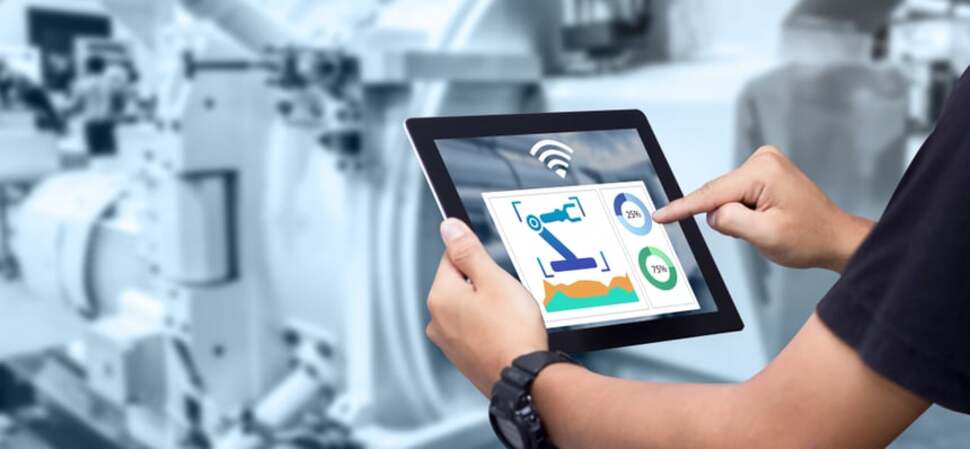Equipment connectivity is key for any organization looking for actionable intelligence and greater overall efficiency. A connected equipment strategy doesn’t just add business and operational value, but it also provides the competitive advantage that industrial original equipment manufacturers (OEMs), and equipment owners and operators need in today’s fast-paced marketplace. If you’re considering implementing equipment connectivity in your organization, there are a variety of questions you may have—from how to overcome the challenges of introducing connectivity into a traditional or established operational process to the immediate and long-term benefits connecting your equipment may bring. Cyient’s resident IoT and analytics expert, Matt Winkler, answers common queries about equipment connectivity and reveals the best practices you can begin to use, from developing a sound strategy through successful implementation and beyond.
- Why is it critical for industrial OEMs, and equipment owners and operators to implement a connected equipment strategy?
With the market demand for equipment connectivity, it is imperative that OEMs and equipment owners and operators incorporate a connected equipment strategy in order to stay competitive in the marketplace. Organizations that stick with an older or more traditional approach to their business and operations are ignoring the potential for business growth and efficiency and could very well be jeopardizing market share.
The benefits of connected products are already well documented in the industrial, mining and oil & gas industries, and what was once a trend will continue with Gartner predicting 25 billion ‘connected things’ by 2021. Not only will equipment connectivity be tied to current product offerings but also into companies’ operations enabling digital products that were not available before. By creating and maintaining a connected equipment strategy, OEMs and equipment owners and operators will ensure that the connectivity solution they create aligns with their overall company strategy, goals, culture, and customer expectations.
- What roadblocks might industrial OEMs, operators and owners face when considering a plan for connected equipment?
As OEMs and equipment owners and operators begin building, integrating and maintaining connectivity, they may face barriers such as cultural inertia, security concerns, lack of technological knowledge, integration with legacy systems, high implementation cost, and difficulty defining the ROI. These roadblocks can cause hesitation for any company, leading them to believe it may just be easier to stick to an ‘if it isn’t broke, don’t fix it’ approach. Although a connected equipment approach can seem complex at the outset, once the right strategy is in place, the benefits will outweigh any difficulties.
- Within an organization, which divisions or roles are involved when developing a connected equipment framework?
Digital isn’t owned by any one business unit or function. The impact of connected equipment crosses multiple functions within an organization. Every role must get involved because a connected equipment strategy affects the entire company, including:
- Chief financial officer
- Chief technology officer
- Profit and loss leaders
- Digital lead
- Engineering teams
- Maintenance and operations teams
- IT teams
- Finance teams
- Sales
- Product owners
- Aftermarket services
- Warranty management
To ensure everyone is onboard and understands how connectivity will work, organizations must create a framework that clearly defines the roles, responsibilities, and benefits to individual divisions and the business as a whole. From redefining traditional roles to creating new roles, a cultural shift must occur within the company.
- What role does digitization play in a connected equipment strategy?
Connected equipment is a critical part of an organization’s overall digital transformation and represents the convergence of information technology with operational technology. The data gathered through equipment connectivity also enables another key digitization benefit: the application of data science to solve business problems. Once an analytic triage methodology, which utilizes machine-learning algorithms to predict premature equipment failure before scheduled maintenance, is defined, the big data is processed into meaningful bites. Utilizing analytics within the application enables the delivery of business insights, ensuring all data is not only up-to-date but also meaningful for OEMs and equipment owners and operators and their end-customers. When predictive and prescriptive analytics are generated, potential equipment failures can be predicted before they have the opportunity to occur; maintenance costs can be reduced; and asset life can be extended.
- What does a successful connected equipment strategy look like?
Start with the business goals in mind and clearly define the problems that the connected equipment solution will solve. When an organization is ready to take the steps toward connecting equipment, the first step is developing a solid roadmap that defines the end goals of a connected equipment strategy as well as the business value and desired ROI. The second key step is understanding how to organize the company in order to efficiently and effectively execute the strategy.
Laying out the goals of connectivity and establishing a plan to achieve them will enable a successful connected equipment journey for any organization.
In addition, the way of thinking has to change. Cultural adjustments need to occur across the entire organization as groups will be working together in ways they haven’t before. From engineering, digital and maintenance personnel to finance and the C-suite, everybody must understand the benefits of connectivity and how each team member will need to be involved.
- What best practices should be followed when defining and executing a connected equipment strategy?
Defining and executing a connected equipment strategy can be seen as a complex and time-consuming initiative; however, following the best practices listed below can ensure a sound and inclusive approach:
- Determine a path forward that is in line with established business goals, and stick with it.
- Embrace the change from an organizational and technological perspective.
- Clearly identify all roles and responsibilities.
- Understand how the revenue model will be altered.
- Design each layer of the solution with security in mind.
- Eliminate the risks and uncertainty that come with building it all from scratch; leverage a third-party vendor experienced in equipment connectivity and IoT system builds.
- What value/benefits does a connected equipment strategy bring to an organization?
A connected equipment strategy can add value from both a business and operational standpoint. As actionable intelligence for equipment assets and operations is created, OEMs and equipment owners and operators can achieve sustained value and ROI while maintaining a competitive advantage. Additional benefits include:
- Improving customer experiences
- Enhancing product performance
- Extending asset life
- Increasing operational safety and efficiency
- Decreasing operating expenses
- Offering new digital products and solutions as well as revenue streams
Read our white paper "Business Made Smarter: Enhancing Competitive Advantage Through Connected Equipment" to learn how you can increase equipment productivity and safety while reducing operating and maintenance costs.















Let Us Know What You Thought about this Post.
Put your Comment Below.